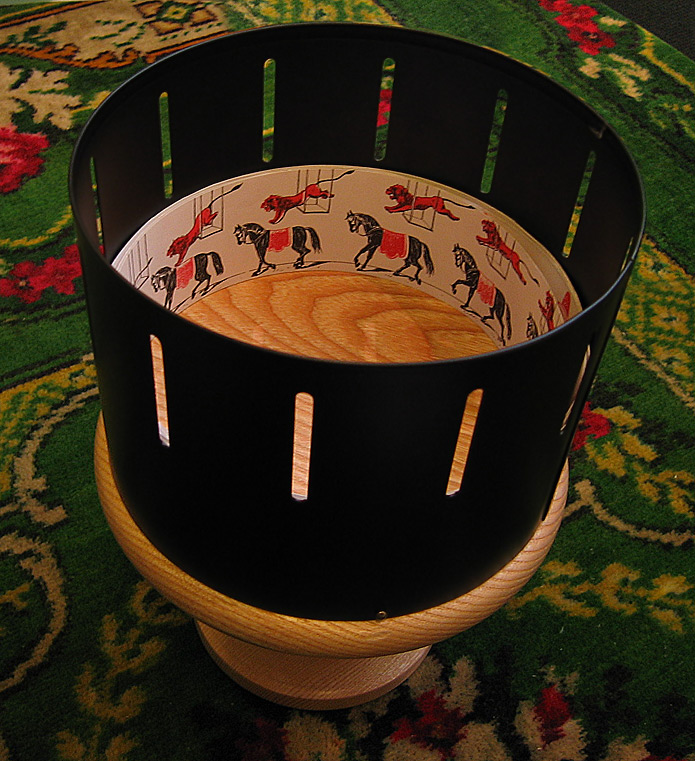Hello!
I know this is might not be the most transcendental question of all, but I am both curious and confused about how exactly this thing (see link below) works and I was wondering if you could explain it in a somehow simple manner...
On a recent trip to Medellin I went to this "Parque Explora", which is like the Maloka we have in Bogota.
In one of the floors, there was a "visual / mind illusion" that you can see here. (video is not mine, sorry for the noise).
I guess the key to the difference between how you first see the "Circus" in movement and how you then just see static figures moving in circles, might be the light.
But if you could explain a little bit more (like, if it is our eye that creates the illusion and what's behind that in scientific terms) it would be great.
If the question makes no sense at all, don't worry :-P
Thanks in advance!
What Margarita saw at this park is known as a zoetrope, and in this case it's a 4 dimensional one. A very famous zoetrope is that one of a "galloping horse". But what is a zoetrope exactly? The word itself comes from "zoe"--> life and "topos"--> turning, basically telling you that the images come to live as the devise turns. It can also be referred as The Wheel of Life.
 |
| From Wikimedia. |
The way a zoetrope works in general is creating the illusion of movement using two main factors: the persistence of vision and something called the phi phenomenon. The persistence of vision is the amount of time that your retina retains an image. The retina, as you might know, is the part of your eye that is sensitive to light. This light, hitting your retina initiates the nerve impulses that allow you to form and image in your brain. In the case of the Circus Illusion that Margarita is talking about, the moment the light exposure changes (in this case modulates by an strobe light) , you are setting your retina for a different image persistence than the one you have when all the lights are on. In general for our brain to get a continuous image of movement, about 24 images per second (IPS) are used on the movies and up to 30 IPS on TV. Recently there have been more and more productions with higher frames per second (FPS) ratio, which you might have noticed, changes the smoothness of movement registered by your brain. According to the Explora website, their zoetrope gives about 12 IPS with the help of the aforementioned light and a well calibrated motor.
Now the phi phenomenon completes the illusion. It is this phenomenon that causes the ultimate sensation of movement and its dependent of luminous impulses in sequence. Once again, your source for these impulses is the strobe light. That is basically our brain connecting the dots, or in this case, the images, and voilà, you have an animation.
I hope I've answered your question, Margarita, please let me know if there are still any doubts and thanks for writing!
Now the phi phenomenon completes the illusion. It is this phenomenon that causes the ultimate sensation of movement and its dependent of luminous impulses in sequence. Once again, your source for these impulses is the strobe light. That is basically our brain connecting the dots, or in this case, the images, and voilà, you have an animation.
I hope I've answered your question, Margarita, please let me know if there are still any doubts and thanks for writing!

No comments:
Post a Comment